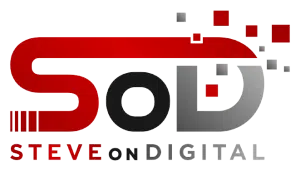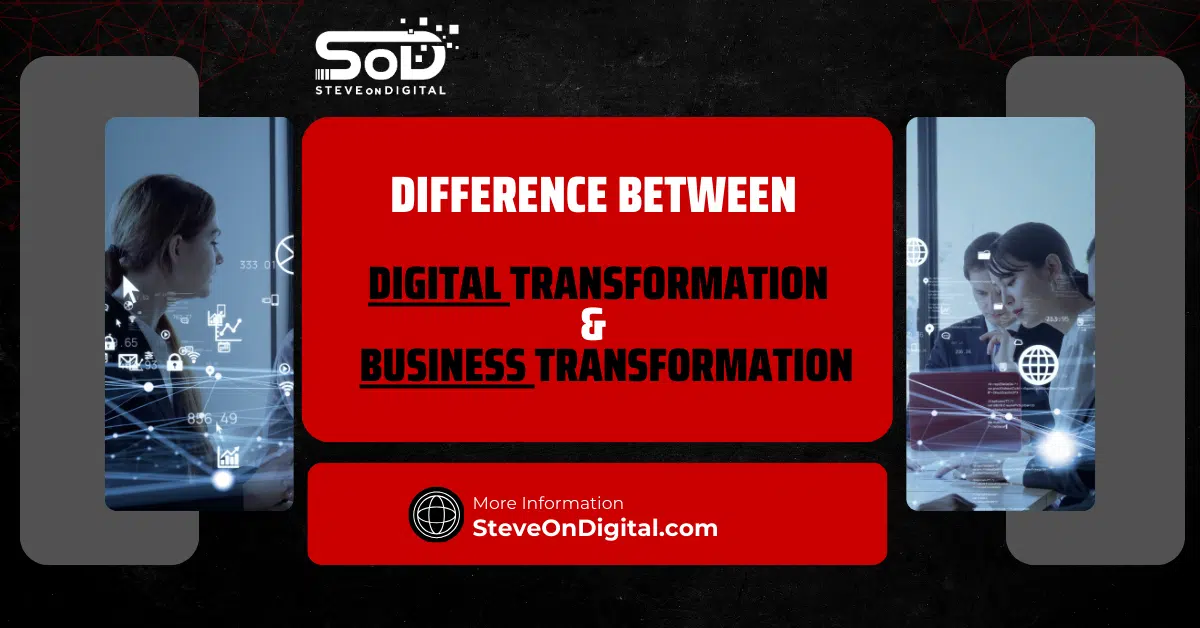Aligning business and IT is essential for success. When these areas work together, businesses thrive through better efficiency, decision-making, and customer satisfaction. Misalignment leads to wasted resources and missed opportunities.
Ensuring IT-business alignment is crucial for driving business transformation goals and objectives, helping organizations get the right technology at the right time to meet key performance indicators.
I bring expertise in digital transformation, backed by an electrical engineering background, an MBA, and a master’s in Project Management. My goal is to help SMEs navigate the digital landscape with practical advice and insights.
Understanding Business Objectives And IT Strategy
Aligning business and IT starts with a clear understanding of business objectives and how IT strategies can support them. When these two aspects are synchronized, it paves the way for sustainable success.
Aligning IT strategies with business objectives is crucial for driving business transformation and achieving long-term success.
Business Objectives And Goals
Business objectives and goals are the foundation of any company’s strategy. They define the direction in which the business is heading. For instance, a company might aim for business growth, enhanced customer experience, or operational efficiencies. These objectives set the stage for developing actionable plans that guide all business processes.
IT Strategy And Its Role
The IT strategy should complement and support the business objectives. It’s not just about implementing technology but ensuring that technology investments drive the desired business outcomes and support business transformation.
IT strategy involves understanding technological capabilities and aligning them with business needs to create value. For example, investing in cloud computing can provide scalability and flexibility, helping businesses meet evolving market trends and customer demands.
Benefits Of Aligning Business And It
There are several key benefits of aligning business and IT, which I’ve witnessed through my experiences.
Improved Efficiency
Aligning business and IT leads to improved efficiency in operations. When both teams speak the same language, they can streamline processes and reduce redundancies. For instance, clear communication of business needs allows IT teams to develop solutions that are spot-on, saving time and resources.
Enhanced Decision Making
Better alignment results in more informed and strategic decision-making. When IT professionals understand business strategies, they can provide insights and solutions that align with business priorities. This collaboration ensures decisions are based on comprehensive data and real-world constraints.
Cost Savings
Effective communication and alignment can significantly reduce costs. By avoiding misunderstandings and focusing on shared goals, businesses can cut down on wasted resources. For example, proper alignment can prevent costly reworks and delays in project management.
Increased Productivity
Alignment also boosts overall productivity. With a shared understanding, both teams can prioritize tasks that contribute to the business’s success. This means less time spent on unnecessary activities and more focus on value-adding tasks.
Improved Customer Experience
Lastly, aligning business and IT improves the overall customer experience. When both departments work towards the same goals, they can deliver seamless, integrated solutions that meet customer expectations. This can lead to higher customer satisfaction and loyalty, driving business growth.
| Benefit | Description |
| Improved Efficiency | Streamlined processes and reduced redundancies. |
| Enhanced Decision Making | More informed and strategic decisions based on comprehensive data. |
| Cost Savings | Reduced costs due to effective communication and alignment. |
| Increased Productivity | Higher productivity through prioritized tasks and clear goals. |
| Improved Customer Experience | Better customer satisfaction through seamless, integrated solutions. |
Key Components Of Business-IT Alignment
Aligning business and IT requires a strategic approach. Based on my experience, several key components are crucial for this alignment to be successful.
Clear Communication
Clear and open communication between business and IT teams is fundamental. It’s essential that both sides understand each other’s language. Business leaders often talk about business objectives, market trends, and revenue streams. On the other hand, IT professionals focus on technical capabilities and solutions.
When both teams can communicate effectively, it bridges the gap and fosters collaboration. For example, regular meetings and updates can help ensure everyone is on the same page and working towards the same goals.
Mutual Understanding
Mutual understanding of each other’s roles and challenges is crucial. Business leaders need to understand the technical constraints and possibilities, while IT professionals should be aware of business priorities and strategies. I have seen how a lack of mutual understanding can lead to frustration and misalignment.
For instance, when business leaders make demands without considering IT limitations, it often results in unmet expectations. Encouraging open dialogues and workshops can enhance this mutual understanding.
Shared Vision And Goals
A shared vision and common goals are the cornerstones of successful alignment. When both business and IT teams are aligned on the overall vision and objectives, they can work together more effectively.
This shared vision ensures that all initiatives, whether they are technology investments or business processes, are directed towards achieving the same strategic business objectives. In my experience, this alignment not only improves business performance but also fosters a sense of unity and purpose among team members.
| Key Component | Description |
| Clear Communication | Open and transparent communication between business and IT teams. |
| Mutual Understanding | Awareness of each other’s roles and challenges. |
| Shared Vision and Goals | Alignment of overall vision and common goals between business and IT. |
Strategies For Aligning Business And IT
Here are some actionable strategies to achieve better alignment between business and IT.
Involving Business Leaders
Involving business leaders in IT alignment is crucial. When business leaders are actively engaged, they can provide valuable insights into business needs and priorities. I always invite business leaders to IT strategy meetings to ensure their perspectives are included.
This involvement helps in aligning technology initiatives with business goals and creates a sense of ownership and accountability.
Regular Meetings And Updates
Regular meetings and updates are vital for maintaining alignment. These meetings give us a chance to check how things are going, talk about any problems, and change plans if needed. I recommend having weekly or bi-weekly meetings between business and IT teams. This practice ensures continuous improvement and keeps everyone informed and aligned.
Using Key Performance Indicators
Key Performance Indicators (KPIs) are essential tools for tracking alignment and performance. By setting and monitoring KPIs, both business and IT teams can measure their success and identify areas for improvement.
For example, KPIs related to project completion times, budget adherence, and customer satisfaction can provide valuable insights into the effectiveness of alignment efforts.
Challenges In Business-IT Alignment
Aligning business and IT is not without its challenges. Here are some common issues and how to address them.
Communication Gaps
Communication gaps often exist between business and IT teams due to differences in terminology and focus. To bridge these gaps, it’s important to establish common ground.
I have found that using visual aids, such as diagrams and flowcharts, can help in explaining complex concepts. It’s important to create a workplace where everyone feels safe to talk about their ideas and worries.
Different Priorities
Different priorities between business and IT can lead to conflicts and misalignment. Business leaders may prioritize market trends and revenue growth, while IT professionals focus on technological capabilities and stability.
To manage these differing priorities, it’s essential to create a balanced approach. This can be achieved by involving both teams in strategic planning and decision-making processes, ensuring that both perspectives are considered.
Technological Changes
Staying aligned amid constant technological changes is another challenge. The rapid pace of technological advancements can make it difficult for businesses to keep up. To address this, it’s important to have a flexible and adaptable IT strategy.
Regularly reviewing and updating technology investments and strategies can help in staying aligned with business goals. Additionally, investing in continuous learning and development for IT teams can ensure they are equipped with the latest skills and knowledge.
Role Of IT Leaders In Business Alignment
IT leaders play a crucial role in aligning business and IT. Their leadership and vision are pivotal in ensuring that IT strategies support and drive business goals. Here’s how they contribute to business alignment.
Strategic Planning
Strategic planning by IT leaders is essential. They need to develop an IT strategy that aligns with the company’s business objectives and priorities. This involves understanding the business needs and integrating them into the IT roadmap.
From my experience, a well-crafted IT strategy can significantly enhance business performance. For example, aligning IT initiatives with strategic business objectives such as market expansion or customer experience improvement can drive significant business outcomes.
Engaging With Business Counterparts
IT leaders must engage with their business counterparts to foster collaboration and mutual understanding. Regular interactions with business leaders help IT professionals grasp the strategic goals and challenges of the business.
This engagement ensures that IT initiatives are aligned with business needs and priorities. I’ve found that inviting business leaders to IT meetings and vice versa creates a culture of open communication and collaboration.
Leading Technology Initiatives
IT leaders are responsible for leading technology initiatives that support business goals. They need to identify and implement technology investments that provide a competitive edge.
For instance, adopting emerging technologies like artificial intelligence or cloud computing can streamline business processes and enhance operational efficiencies. IT leaders must ensure these initiatives are in the same direction as the company’s business vision and strategic planning.
Impact Of Emerging Technologies On Business-IT Alignment
Emerging technologies significantly impact business-IT alignment. These technologies offer new opportunities and challenges that businesses need to navigate effectively.
Cloud Computing
Cloud computing plays a pivotal role in facilitating business-IT alignment. It offers scalability, flexibility, and cost-efficiency, allowing businesses to respond quickly to market trends and customer needs. In my experience, cloud solutions enable seamless collaboration between different departments, leading to better alignment and improved business performance.
Digital Transformation
Digital transformation initiatives are crucial for staying competitive in today’s market. These initiatives involve integrating digital technologies into all aspects of a business, leading to fundamental changes in how companies operate and deliver value to customers.
Successful digital transformation requires close collaboration between IT and business units. For example, implementing a digital customer experience strategy can significantly enhance customer satisfaction and loyalty.
Artificial Intelligence
Artificial intelligence (AI) has a profound influence on aligning business and IT strategies. AI can automate processes, provide data-driven insights, and enhance decision-making.
By leveraging AI, businesses can achieve operational efficiencies and gain a competitive advantage. From my observations, companies that integrate AI into their business processes can adapt quickly to changing market conditions and customer demands.
Case Studies And Real-Life Examples
Real-life examples and case studies provide valuable insights into successful business-IT alignment.
Case Study 1: Company A
Company A successfully aligned business and IT by fostering open communication and collaboration. They implemented regular strategy meetings between business leaders and IT professionals, which helped align their technology initiatives with business goals. This approach led to improved project outcomes and enhanced business performance.
Case Study 2: Company B
Company B focused on strategic planning and investing in emerging technologies. They adopted cloud computing and AI to streamline their business processes and improve customer experience. By aligning their IT strategy with business objectives, they achieved significant business growth and competitive advantages.
Lessons Learned
These case studies highlight several lessons:
- Open communication and regular meetings are crucial for alignment.
- Strategic planning by IT leaders ensures that technology initiatives support business goals.
- Investing in emerging technologies can provide a competitive edge and enhance business performance.
Tools And Frameworks For Business-IT Alignment
Aligning business and IT can be a complex task, but there are several tools and frameworks designed to make this process more manageable and effective. I’ve found these to be invaluable in my own work.
ITIL Framework
The ITIL framework is a set of practices for IT service management (ITSM) that focuses on aligning IT services with the needs of the business. ITIL helps businesses achieve it business alignment by providing a detailed, process-oriented approach.
It covers everything from strategy and design to transition, operation, and continuous improvement. By following ITIL practices, businesses can enhance their IT services, ensuring they support business objectives and deliver business value.
COBIT Framework
The COBIT framework (Control Objectives for Information and Related Technologies) is another excellent tool for achieving business-IT alignment. COBIT provides a comprehensive framework that assists organizations in achieving their business goals and objectives through effective governance and management of IT.
It emphasizes regulatory compliance, risk management, and aligning IT strategy with business strategy. Implementing COBIT can help businesses ensure their IT investments are aligned with their strategic priorities, thereby enhancing business performance.
Balanced Scorecard
The Balanced Scorecard is a strategic planning and management system used to align business activities to the vision and strategy of the organization. It helps improve internal and external communications and monitor organizational performance against strategic goals.
By using a Balanced Scorecard, businesses can track key performance indicators (KPIs) that reflect both financial and non-financial outcomes. This approach provides a holistic view of the organization, ensuring that business strategies align with IT strategies to achieve overall business success.
| Tool/Framework | Purpose |
| ITIL Framework | Aligning IT services with business needs and enhancing service management. |
| COBIT Framework | Ensuring regulatory compliance and aligning IT strategy with business strategy. |
| Balanced Scorecard | Tracking key performance indicators to align business activities with strategic goals. |
Future Trends In Business-IT Alignment
As technology evolves, so do the trends that impact business-IT alignment. Staying ahead of these trends is crucial for maintaining effective alignment.
Increased Focus On Cybersecurity
Cybersecurity is becoming increasingly important in business-IT alignment. As cyber threats grow more sophisticated, businesses must invest in robust cybersecurity measures to protect their data and operations.
A strong cybersecurity strategy is essential for maintaining business continuity and trust, ensuring that IT investments support business goals without compromising security. For small business owners, this means regularly updating security protocols and educating employees on best practices.
Rise Of Remote Work
The rise of remote work has significantly impacted how businesses and IT departments operate. With more employees working from home, businesses must ensure that their IT infrastructure can support remote work efficiently.
This includes investing in secure and reliable communication tools, cloud computing solutions, and remote access technologies. In my experience, adapting to these changes can improve operational efficiencies and enhance employee satisfaction, ultimately benefiting the business.
Evolution Of Customer Expectations
Customer expectations are continually evolving, driven by advancements in technology and changing market trends. Businesses must align their IT strategies with these evolving expectations to remain competitive.
This involves leveraging emerging technologies like artificial intelligence and data analytics to better understand and meet customer needs. By focusing on improving customer experience through technological innovation, businesses can achieve better alignment and drive business growth.
| Trend | Impact on Business-IT Alignment |
| Increased Focus on Cybersecurity | Ensures business continuity and trust by protecting data and operations. |
| Rise of Remote Work | Necessitates investments in secure, reliable remote work technologies. |
| Evolution of Customer Expectations | Drives the need for technological innovation to meet changing customer demands. |
Final Thoughts
Aligning business and IT is essential for any company looking to achieve sustained success. The tools and frameworks discussed, such as ITIL, COBIT, and the Balanced Scorecard, provide valuable guidelines for achieving this alignment. Keeping an eye on future trends, like cybersecurity, remote work, and evolving customer expectations, ensures that businesses stay ahead of the curve.
By fostering clear communication, mutual understanding, and shared goals, businesses can create a cohesive strategy that leverages IT to drive business outcomes. This alignment not only enhances efficiency and decision-making but also supports continuous improvement and growth in an ever-changing business landscape.
Incorporating these practices and staying adaptable to new trends will position your business for long-term success. Remember, the journey of aligning business and IT is ongoing, and staying proactive in this endeavor will yield significant rewards.




